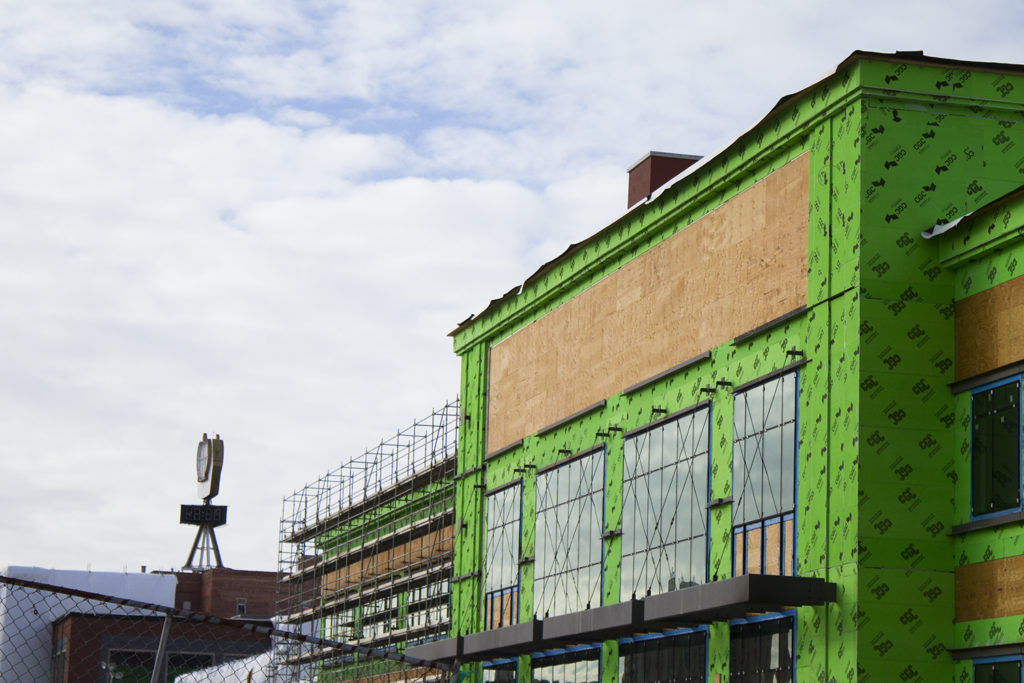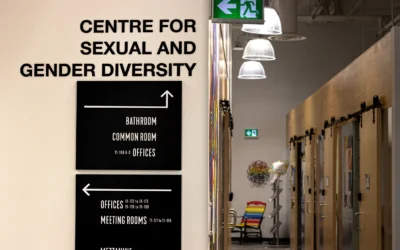A dozen blocks from MacEwan University’s downtown campus, Edmonton’s Brewery District remains under development. Discussion of redeveloping Oliver’s Molson-Crosstown site has been ongoing since the brewery closed down in 2007.
According to David Johnston, Principal Heritage Planner for the City of Edmonton, the brewery tower was constructed in 1913, and the administration building was founded in 1925. Both buildings fell under ownership of several companies before they were sublet to the Molson Coors Company.
In October 2015, the Edmonton Journal reported that city council voted in favour of registering the Molson brewery buildings as historic resources. Council also agreed to finance half of the restoration costs, or roughly $4.2 million.
The Brewery District was initially scheduled to be complete by fall 2015. However, as of early 2016, the site is still under construction.
First Capital Realty is developing the site with investment from Sun Life Financial. Dialog is responsible for the district’s design.
According to Dialog’s website, “This mixed-use, pedestrian-oriented development will bring renewed vitality and amenity through the provision of new retail, commercial office and residential uses while strengthening important linkages through the site to surrounding precincts and their associated amenities.”
Conflict arose, however, when the first sketches of the district were released in 2013, as there appeared to be little consideration given to pedestrians. In April 2013, the Oliver Community League published a letter to Ralph Huizinga of First Capital Realty, stating community concerns regarding the design of the site, which was described as “car-oriented” and “not particularly friendly for pedestrians.” The Brewery District can anticipate many of its patrons to be pedestrians, from nearby residents to students from neighbouring MacEwan University.
In 2013, after the Brewery District proposal was announced, the community league gathered with neighbourhood members and created a list of principles (which are still available on the league’s website) for the neighbourhood’s development. The list includes “multi-modal transportation” for “a neighbourhood where every person has the ability to safely travel within and through the community via walking, biking, public transit and automobiles.”
However, Dialog’s proposed design included a large number of surface-level parking spots. The Oliver Community League immediately objected to the project, says James Eastham, the league’s communications director.
“The league’s biggest frustration with this development is that it took this great opportunity, a huge space in a community . . . and they build the same thing that they’ve built all over Edmonton — this giant parking lot with stores around it,” says Eastham.
On Dialog’s website, a promotional video for the Brewery District states that “with construction of a new LRT line set to take place in the next few years, this will be a transit-oriented development.”
The interactive Valley Line LRT map on the City of Edmonton website indicates plans for an LRT station at 120 Street and 104 Avenue, but it may be years until the LRT station is complete.
Users of online forums such as Reddit and Connect2Edmonton also share complaints that echo Oliver Community League’s concerns.
“It was a terrible misuse of the land,” Reddit user StupidDeep wrote on Feb. 2.
The Mountain Equipment Co-op (MEC) location just off 124 Street and 102 Avenue will be moving to a new location in the Brewery District. The new store is intended to be two storeys and 38,000 square feet, according to MEC’s September 2015 media release. Other planned Brewery District retailers include Loblaws, Shoppers Drug Mart, and GoodLife Fitness.
Details of funding for the rehabilitation project were confirmed in February 2016, when it was announced that the Heritage Reserve Fund will grant annual payments of $417,000 from 2016 until 2025, according to Johnston. He added that this funding is intended to cover only the basic footprints of the building and not essentials, such as electricity or plumbing.
Johnston estimates that the rehabilitation of the Molson buildings will take approximately five more years. He explains that this is due to a lack of workers that specialize in this type of restoration.
“There’s only a certain amount of capacity in the industry to support that type of rehabilitation work. It’s a fairly specialized kind of work,” says Johnston. “We typically allow a five-year window for the work to be completed. We might get it done sooner than that, but we allow that five-year time period to sort of accommodate them and get this work completed.“
Though progress is slow, the Brewery District will eventually be open to the public, and time will tell whether the project’s critics were right about its effect on the region.
Photo by Casey Pollon





0 Comments